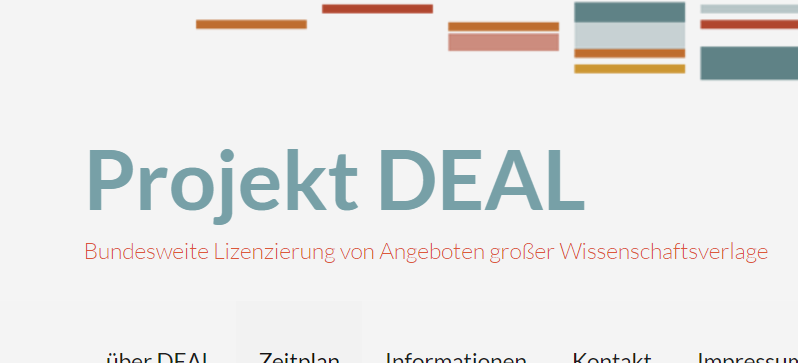
German Research Institutes to Boycott Elsevier
About 60 major German research institutions have mounted coordinated pressure on Elsevier –the giant scientific journals’ publisher. These institutions are putting pressure on Elsevier to renegotiate better terms of contract with Elsevier before the current contract runs out at the end of 2016. So far, the two sides failed to agree on contract that satisfies both sides. As a result, German research institutions do not get access to full texts of Elsevier journals per 1 January 2017. They are determined to continue with the boycott until Elsevier meets their demand.
According to Prof Hippler, President of HRK (German Rectors’ Conference), the negotiation with Elsevier is in a deadlock. Because, the parties failed to agree on core issues. The German institutions’ demand is to see significantly improved ‘provision of and access to content (Open Access) as well as pricing.’ To meet their demand Elsevier proposed a new offer. However, its first offer was rejected by the German research institutions, according to the statement released. The reason provided is that the offer does not comply with the principles of Open Access. Due to disagreement, the negotiation has been terminated. Unfortunately this might have dire consequences on research and teaching process. The institutions seem to continue challenging Elsevier until they agree on an outcome advantageous for the German scientific community, nonetheless.
There are two main reasons that have triggered change in scientific journals publishing industry. First, ever-increasing cost of journal subscription is forcing libraries, individuals and groups to take actions (including boycott) against Elsevier and other industry dominating companies. Subscription cost skyrocketed over the past two decades. As a result major publishers enjoy high ( Elsevier 40%) profit margin; something companies in other industries only dream about. Secondly, open access movement, advocates free access to scholarly research output, is shaking the status quo up. Here the argument is that there is no justification for the public to pay (mostly high subscription fees) for research funded by tax payers.
The criticism Elsevier and others are facing is that despite taking some steps, they have not gone far in terms of embracing open access. Those industry dominating companies including Elsevier publish some of the most prestigious journals in many research fields. Individual institutions have very little leverage over those publishers. That is why coordinated action seem to work to some degree. Last year, in a similar way, the Dutch universities forced Elsevier to come to terms with their demand. Sources

The quality of scientific publications will benefit from a revolution in the peer review models.
The peer review system was created in the 20th century as a means to ensure the quality and integrity of scientific research. Until recently, peer review mostly took place before articles have been published, relying on ‘single blind’ and ‘double blind’ processes. ‘Single blind’ refers to a review system where reviewers remain anonymous to the authors. In the ‘double-blind’ review, both the authors and the reviewers are anonymous to each other. The two models are meant to limit the degree of bias in reviewing processes.
Though it has played a pivotal role in improving the quality of scientific articles, the traditional peer review system has fallen under criticism. Among the academic community, there a growing feeling that traditional peer review is failing at accomplishing its core objective: ensuring scientific quality. With the traditional peer review system, transparency is limited by the fact that the reviewers’ comments are not made public. Besides, the criteria by which scientific articles are accepted or rejected can be rather blurry sometimes. These challenges have forced publishers and researches to look for alternative approaches of reviewing scientific articles.
Open peer review
The whole idea behind open peer review is to achieve a high level of transparency in scientific publications. This approach requires that both the manuscripts, the reviewers’ names and comments and the authors’ response are made available for public scrutiny. Here, authors see who reviewed their work. It also limits reviewers’ bias (which often leads to the acceptance or rejection of an article based on non-scientific grounds) while helping them get due credit for their work. Moreover, the reviewers’ comments released with the manuscript might provide additional and useful information for the readers.
Post peer review
Post peer-review happens after unreviewed articles are published or put online. The objective is to replace or improve pre-publication peer review with post publication comments and critics.
Post review may take three shapes. In the first case, reviewers are formally invited by editors to review the article once it has been published. F1000Research and Copernicus are two major journals pursuing this approach. In the second case, practiced by publishers such as Science Open and The Winnower, unreviewed articles are analyzed by volunteers. Lastly, in the third approach, independent peer reviewers revise papers on third party websites. PubPeer and PubMed Commons are two platforms dedicated to post peer review. Research shows that most online comments about unreviewed articles are negative. To balance over criticism, PubPeer moderates comments whereas PubMed Commons allows only registered users to comment.
All things considered, post peer review makes publishing fast and transparent. Nonetheless, the model has its own flaws. One of the major issues is that voluntary reviewers may not have the required skills to critically judge a scientific work. In addition, some journals might not receive reviews and discussions are fragmented. Another challenge of post review, which is often overlooked by many experts, is the reliability of papers which are not yet reviewed for citation.
Read more

